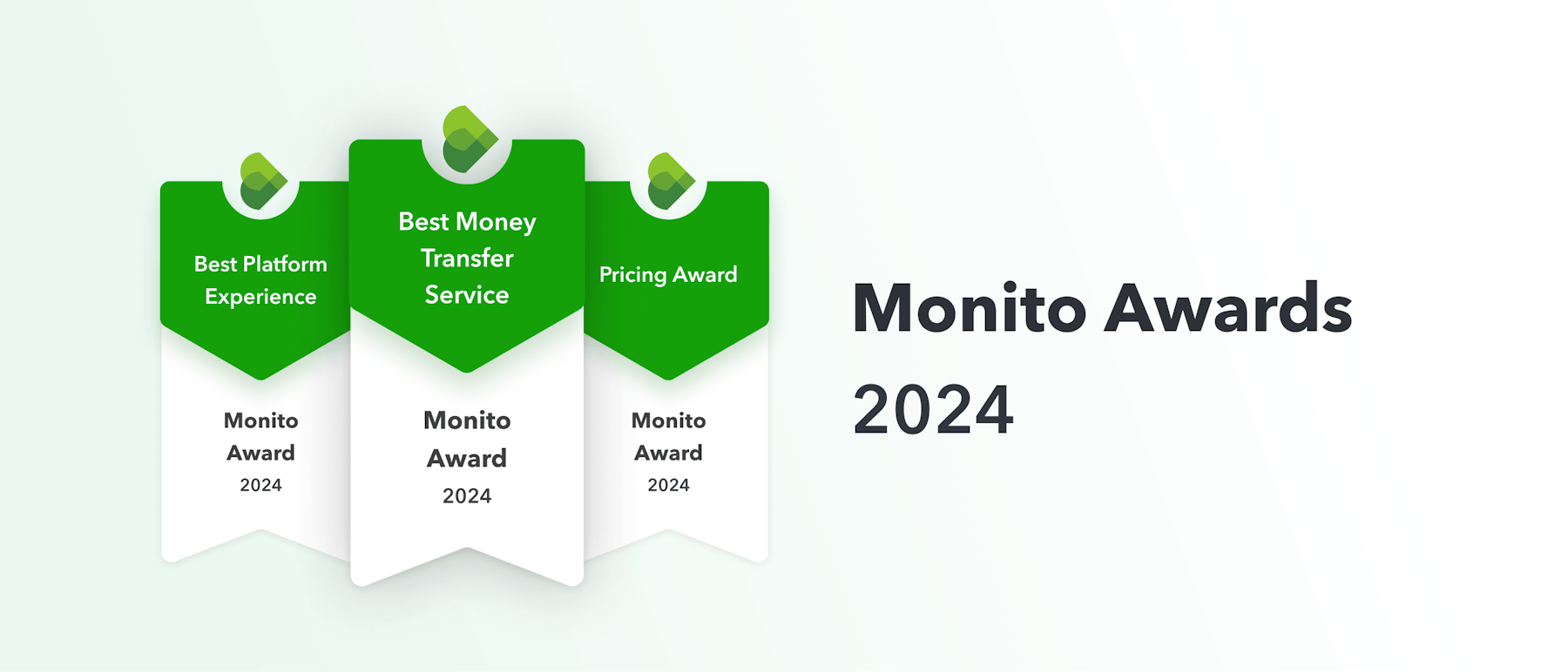
A Comprehensive Guide to Opening an Estonian Bank Account (Even For Non-Residents Online)
.jpg?auto=compress,format&rect=0,0,1629,1629&w=120&h=120)
Byron Mühlberg
Guide
.jpg?auto=compress,format&rect=0,0,1629,1629&w=120&h=120)
Monito's Managing Editor, Byron has spent several years writing extensively about financial- and migration-related topics.
Links on this page, including products and brands featured on ‘Sponsored’ content, may earn us an affiliate commission. This does not affect the opinions and recommendations of our editors.
Read moreNot only is the small Baltic country of Estonia known for its charming medieval city centres, wooden bog trails, and dense pine and birch forests, but among entrepreneurs, it's a prized destination due to its generous e-residency program, which allows foreign nationals to start a business in Estonia right from their home country. This, combined with the country's political stability, competitive financial sector, and high standard of living, makes Estonia an attractive destination for many visitors, expats, digital nomads, and foreign workers in 2024.
Accordingly, opening a bank account in Estonia is a comparatively simple and accessible process – even if you're a foreigner or non-resident (as long as you have a close connection to Estonia or are willing to become an e-resident). Still, as always, there are a few things you'll want to understand, plan, and compare before starting the process yourself. In this comprehensive guide, we cover all the relevant details to help you make an informed decision about banking in Estonia.
In a rush? Here are our recommendations if you're:
- starting a business in Estonia: Swedbank
- moving long-term to Estonia for work: SEB Pank
- a digital nomad from the EU: Revolut Bank
- a digital nomad from outside the EU: Wise
Before we delve further into the topic, let's get an idea of what options exist to open a bank account in Estonia. As we'll see, all things considered, you have two broad paths when it comes to opening a bank account in the country. We've summarised them as follows:
- Option 1: Open a bank account with a traditional Estonian bank. This gives you an Estonian IBAN ('EE') and requires proof of residence in the country (e-residence will suffice). It's generally the best option if you're planning to move longer-term to, or to start a business in, Estonia.
- Option 2: Open a bank account with an EU-based online bank. This gives you an IBAN from a different EU country (e.g., Germany or the Netherlands), which is fully valid in Estonia, and doesn't require proof of residence there. It's generally the best option if you just need to receive payments from an Estonian bank account or if you plan a shorter stay in Estonia but don't necessarily intend to live or work there for long. It's also a good option for longer-term expats who need a simple euro bank account to get them started in their first few days or weeks in Estonia before getting set up with a local bank account.
This article breaks down each option to see what requirements are needed and what the best banks per category are.
All About Opening a Estonian Bank Account Online
- 01. What's banking like in Estonia?
- 02. What is e-residency in Estonia? What does it mean for banking?
- 03. Option 1: Open a traditional bank account (residence required)
- 04. Option 2: Open an online bank account (residence not required)
- 05. How to send money to an Estonian bank account
- 06. FAQ about bank accounts in Estonia
Key Facts About Banking in Estonia
| 🏦 No. of Banks in Estonia | 10 |
|---|---|
| 👨⚖️ Regulatory Body | Finantsinspektsioon |
| 🏆 Best Bank for Residents | SEB Pank |
| 💸 Best Money Transfer to Estonia | It varies. Compare now. |
| 💻 Best Account for Non-Residents | |
| 💷 Average Running Costs | €0 /month |
Overview of Banking in Estonia
Leo Roomets

Since the fall of the Soviet Union and independence in August 1991, Estonia has embraced an open and transparent financial services sector which is today among the most developed in Europe.
In 2024, not only do Estonian banks offer regular services like everyday banking, but they're also home to world-class wealth management, leasing, and factoring services. Presently, there are ten members of the Estonian Banking Association, the three largest of which (Swedbank, SEB Pank, and Luminor Bank) are owned by larger Swedish or Norwegian banking associations, while others (like LHV Pank and TBB Pank) are wholly Estonian-owned. As of 2023, Estonia is classified as having a concentrated, bank-focused financial sector due that's "medium-sized" in global comparison, according to a report by Eesti Pank (Estonia's national bank), with more growth expected.
All of this means that you, as an expat, will likely be spoilt for choice when it comes to reliable banking options. In the end, if you're just looking for a regular personal or savings account, it probably won't make too much of a difference which bank you choose in terms of security and monthly fees (more on this later).
Fun fact: The Estonian word for 'bank' is pank (a borrowing from the German 'Bank'). Don't be surprised, therefore, to find this word floating not only around this article but also on signs and advertisements in downtown Tallinn!
Types of Estonian Bank Accounts
Just like in all EU countries, Estonian banks offer two types of accounts as part of their everyday banking services: current and savings accounts. We've also included a third account type below, which is essentially the same as the first but has a broader connotation.
- Personal (current) account: Known as an arvelduskonto in Estonian, these accounts are used to process cashless payments and are geared toward everyday use. They're synonymous with standard checking or current accounts found in most English-speaking countries.
- Savings deposit: These accounts, called kogumishoius by locals, are savings accounts that allow funds to be deposited while restricting withdrawals and accruing interest. You can normally open one alongside a current account.
- Basic account: Known as a põhipangakonto in Estonian, these bank accounts offer basic banking services for free or at a low cost and are available so long as the applicant is an EU resident (meaning both EU nationals and holders of EU visas, including those with refugee status, are eligible to open one). In practice, they're exactly the same as the current account mentioned above.
What Do I Need To Open an Estonian Bank Account?
While the paperwork and requirements can differ slightly from bank to bank, the following documents are commonly requested to open a bank account in Estonia:
- A valid passport,
- A valid residence permit or visa in Estonia (which can be e-Residency),
- A rental contract (mortgage statements are accepted, too),
- An Estonian Smart-ID, Mobile-ID, or ID card.
Estonian E-Residency: What It Means For Banking
Maksim Shutov

An e-Residency Digital ID is a government-backed business creation program that allows non-Estonian nationals from practically anywhere in the world to register a business in Estonia. Today, it's one of the most popular routes to being involved in the Estonian economy, having attracted around 100,000 e-residents from over 170 countries, with around 25,000 companies being founded to date.
It's worth noting that the e-Residency program is only available to prospective foreign entrepreneurs and doesn't allow you to move to Estonia. In other words, you cannot apply for an e-residency in Estonia if you plan to be employed there or otherwise move to the country. By becoming an e-resident, you keep your home country as your place of residence, but you gain formal permission to register a business in Estonia, which lets you open a bank account, pay taxes, and access the eurozone economy (although it doesn't entitle you to receive any of the benefits related to EU residency).
If you're an e-resident or planning to apply to become one, you can open a bank account with any of the local banks as soon as you receive your e-residency permit, which can take up to eight weeks to arrive. You'll need to tell the bank that you're an e-resident, and they'll then likely want to see your passport, e-residence permit, and your proof of address abroad. The process is simple and can be completed entirely online in just a few days.
If you'd like to learn more about Estonia's e-Residency program, take a look at the government's website to get started.
Option 1: Traditional Banks
Sergei Gussev (CC BY 2.0 DEED)

The first option to open a bank account in Estonia is to use a traditional bank. As we saw earlier, there are only a handful of banks to choose between, the three largest of which in terms of customers are Swedbank, SEB Pank, and Luminor Bank.
Together, all of these three Scandinavian banks have a long history and offer a broad scope of service, although they're generally a little more expensive and tricky to set up an account with compared to the options we explore later. Also worth noting is that opening a traditional current or savings account at a big Estonian bank will require proof of residency, although non-residents who can prove a close connection to Estonia (e.g., foreign students, foreign property-owners in Estonia, shareholders in local companies, close relatives of Estonians, etc.) are generally welcome to apply.
Find out more about the offerings of these banks below:
Swedbank
Founded as the first-ever savings bank in Sweden in 1820, Swedbank is today a massive banking group with a big presence not only in Estonia (where it's the country's largest bank with around 960,000 customers) but also in Lithuania and Latvia. Below, we go over the most attractive account offering for expats:
- Everyday banking: This is the standard current account package geared toward locals and resident expats alike. The account is completely online and includes e-banking, a debit card, payments, and e-services. It costs €0 per month, but if you're applying for an account as a non-resident from outside the EU/EEA, you'll be charged €200 to process your application. Setting up an account online will require you to fill out a questionnaire and have a video call with a bank representative. Swedbank is also fully serviced in English and Russian in addition to Estonian.
SEB Pank
SEB is Estonia's second-largest bank. Although it's Swedish in origin, it is today very much focused around the Estonian market and has become a household name in the country. Here's its standard bank account offering for expats:
- Current Account: SEB's current account is a standard account which lets you make and receive payments and use a debit card. It costs €0.30 per month for Estonian and other EU/EEA residents and €7 per month for non-EU/EEA residents (who're also charged €250 to apply). Once you've opened your account, SEB also lets you open investment or pension accounts totally free.
Luminor
Estonia's (and the Baltics') third-largest bank, Luminor, is a newer contender in the banking scene. The bank was founded in 2017 and has a more modern look and feel to its web presence. It offers the following account package to locals and expats alike:
- Retail Account: Luminor's standard account offers you "settlements, cash transactions, bank cards, deposits, online and mobile banking" for a fee of €0 per month, according to the website. Non-EU/EEA residents, however, pay €10 per month and an additional €250 to apply for an account.
Option 2: Digital Banks
Scott Graham on Unsplash

Online banks (or internetipangad in Estonian) are fully-fledged banks offering all or most of the usual banking services. The main difference is that they don't operate out of branches; banking services are completely online instead.
Online banks are EU-wide, so they're not based in Estonia and won't provide you with an Estonian bank account and IBAN. However, this won't be a problem for making and receiving payments to and from Estonian bank accounts since the euro IBAN system is completely integrated (and IBAN discrimination is illegal). Furthermore, online accounts also won't require Estonian residence, though the banks mentioned below will require EU residence. Let's take a look at some of the major online bank offerings:
Revolut Bank
A major name in financial technology, Revolut Bank has been at the forefront of Europe's online financial services sector in recent years. With over 12 million customers worldwide, the London-based tech company isn't only available not only in Europe but worldwide. In the EU, most of Revolut's financial services (including its current accounts) are offered by Revolut Bank UAB, which is a licensed bank in Lithuania and authorised across the EU, including in Estonia. Opening a Revolut bank account gives you a Lithuanian IBAN ('LT'), a debit card, and a savvy, fully functional mobile banking app.
Here are the various plans offered by Revolut, with each offering more benefits than the last (although all include the bank account and debit card):
Account Name | Fee /Month |
|---|---|
0 | |
3.99 | |
8.99 | |
15.99 | |
55 |
N26
Arguably Europe's best-known mobile-only bank, N26 is a widely-used and much-loved German challenger bank with seven million customers across the eurozone. Moreover, N26 is also partnered with transfer service Wise, allowing in-app international money transfers at some of the best exchange rates on the market. N26 gives you basic online banking, a German IBAN ('DE'), and a debit Mastercard.
To open an account, N26 requires an EU proof of residence (not necessarily an Estonian one). Please note that N26 isn't available for US or UK citizens. It offers customers the following three types of accounts in the EU, all of which are fully functional in Estonia:
Account Name | Fee /Month |
|---|---|
0 | |
4.9 | |
9.9 | |
16.9 |
bunq
Amsterdam-based bunq is another popular European challenger bank that has established itself as a real alternative to big banks across Europe in recent years. The bank is well-known for its slick user interface and flexible features geared toward young people, travellers, and others frequently on the move. When you open a bunq account, you'll get a Dutch IBAN ('NL') and Mastercard debit card (with premium paid plans, you'll even get to choose between Dutch, German, Spanish, French, or Irish IBANs).
Like N26, all of bunq's bank accounts are integrated with Wise, making international money transfers very cheap. The bank offers the following three current account options to customers across the EU:
Account Name | Fee /Month |
|---|---|
0 | |
2.99 | |
8.99 | |
17.99 |
Non-Bank Personal Accounts
In addition to Revolut Bank, N26, and bunq (all of which are licensed EU banks), a few non-bank financial platforms offer similar online accounts that you can use to make and receive euro payments in Estonia. A few of these include:
- Wise: Lets you hold foreign currency balances in over 50+ and gives you foreign account details in nine countries. Wise also lets you hold a euro account (with an IBAN) that can be used to make and receive euro payments in Estonia, and since it is available in non-European countries like the USA, the UK, Singapore, Australia, Canada, Japan, and New Zealand, we think Wise is the best choice to handle your finances if you're moving to Estonia from outside of Europe.
- Tomorrow: Gives you a euro current account, with its main value proposition being its eco-friendly offering and environmental donation schemes. Tomorrow is only available in Germany, Austria, Italy, and Spain.
- Monese: Lets you hold EUR, GBP, RON, and SEK balances and lets you sign up for an account in just minutes.
How To Send Money to an Estonian Bank Account
Thomas Lefebvre on Unsplash

If you're moving to Estonia from abroad, you'll need to consider how to transfer your funds into your new bank account. (This process can be especially costly if you're depositing money from a currency other than euros.) To deposit money into your new Estonian euro account from your home currency before you move, you'll need to go to your online banking and choose between one of two options:
- Sending a wire transfer through your bank directly;
- Sending a bank transfer via a money transfer specialist.
In general, we don't recommend using your bank to transfer money internationally, as the fees can be exorbitant, and the waiting times can be lengthy. This is mainly because banks wire funds over the SWIFT network, which adds many timely and expensive steps to the money transfer process.
Instead, if the amount you'd like to send to Estonia is in the order of several hundred or thousand US dollars or equivalent, then we recommend you use a money transfer specialist service (Wise is generally the cheapest to Estonia from countries such as Germany, the US, and the UK.) To compare which services are cheapest for your transfer amount and home country to Estonia, run a search on Monito's real-time comparison engine here.
On the other hand, if you're moving large amounts of money from your home currency to your new bank account in Estonia (i.e. anything upwards of USD 30,000 or equivalent), then services such as Wise may not be your cheapest bet. Instead, we recommend exploring your options among the foreign exchange brokers that support transfers from your country to Estonia. These services specialise in negotiating favourable exchange rates on your behalf and are the most cost-effective option for transferring large sums of money (such as life savings or liquid investments) across borders.
To find out which service will offer you the best deal in real time, run a search on our comparison engine below:
Compare leading money transfer providers in real-time:
Recap: Best Online Bank Accounts in Estonia
Maksim Shutov

To conclude, let's recap the main recommendations we explored in this non-resident banking guide:
- SEB Pank: Best Estonian bank for expats living and working in Estonia.
- Revolut Bank: Best euro bank account for European digital nomads.
- Wise: Best euro account for digital nomads from outside of Europe.
- Monito: Best way to compare money transfers to Estonia.
FAQ About Banking in Estonia
Can a foreigner open a bank account in Estonia?
Yes, in general, a foreigner or non-resident can open a bank account in Estonia if they can prove a close connection to Estonia, for example they're a foreign student, a foreign property-owner in Estonia, a shareholder in a local company, or a close relative of an Estonian citizen.
Can I open a bank account in Estonia with e-residency?
Yes, having an e-Residency Digital ID and registering a business in Estonia allows you to open a bank account in the country completely online.
Is Estonia a tax haven?
No, Estonia is not a tax haven. The country uses a simple tax scheme for both individuals and businesses. However, one loophole which exists that's given rise to the misconception of Estonia being a tax haven is its exemption on taxing undistributed profits. This means that any profit a business earns in Estonia won't be subject to any corporate income tax, so long as those profits are kept within the company (i.e., reinvested or saved).
Check Out These Other Guides Too:











Why Trust Monito?
You’re probably all too familiar with the often outrageous cost of sending money abroad. After facing this frustration themselves back in 2013, co-founders François, Laurent, and Pascal launched a real-time comparison engine to compare the best money transfer services across the globe. Today, Monito’s award-winning comparisons, reviews, and guides are trusted by around 8 million people each year and our recommendations are backed by millions of pricing data points and dozens of expert tests — all allowing you to make the savviest decisions with confidence.
Monito is trusted by 15+ million users across the globe.
Monito's experts spend hours researching and testing services so that you don't have to.
Our recommendations are always unbiased and independent.


